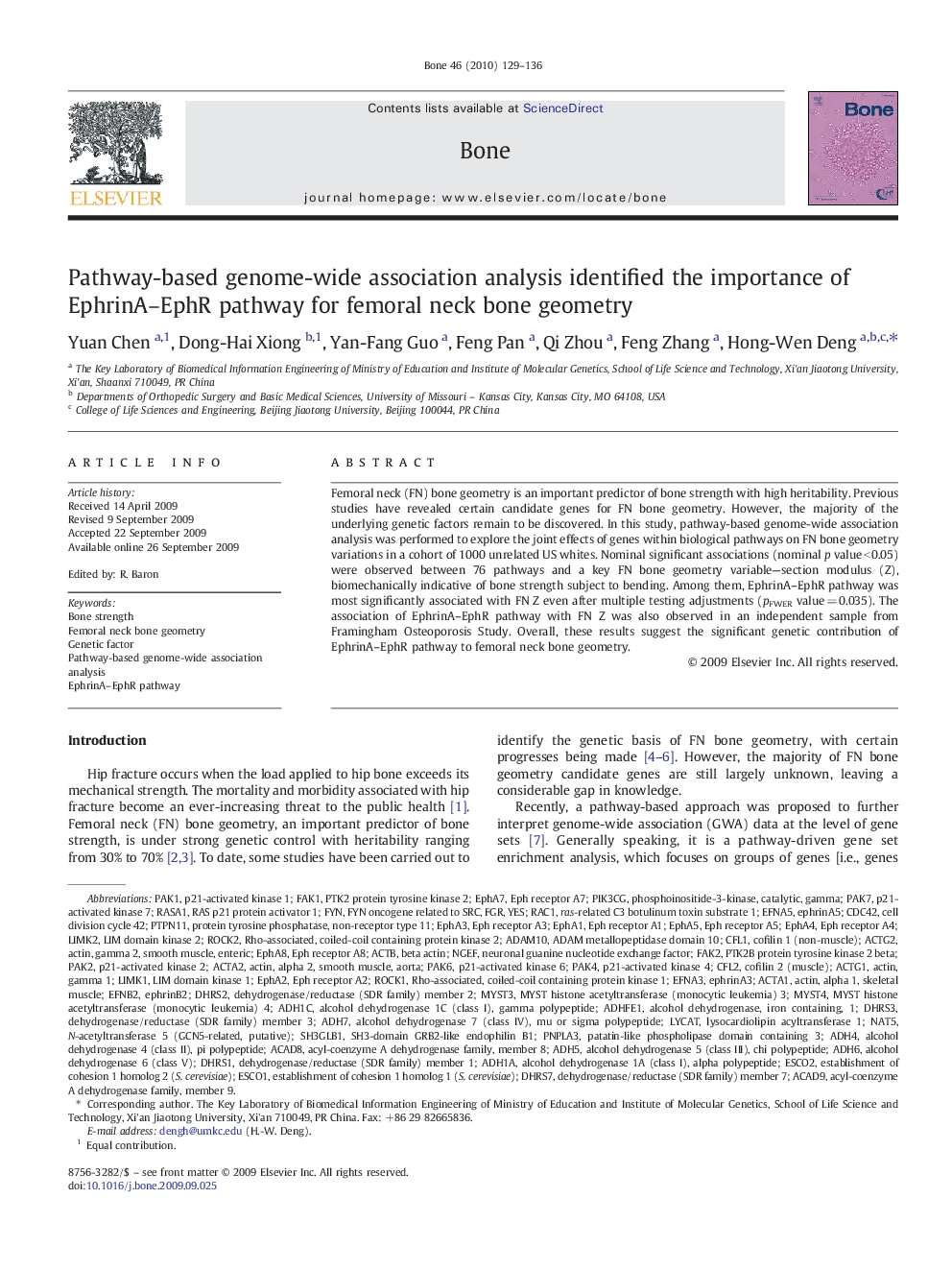| Article ID | Journal | Published Year | Pages | File Type |
|---|---|---|---|---|
| 2780223 | Bone | 2010 | 8 Pages |
Abstract
Femoral neck (FN) bone geometry is an important predictor of bone strength with high heritability. Previous studies have revealed certain candidate genes for FN bone geometry. However, the majority of the underlying genetic factors remain to be discovered. In this study, pathway-based genome-wide association analysis was performed to explore the joint effects of genes within biological pathways on FN bone geometry variations in a cohort of 1000 unrelated US whites. Nominal significant associations (nominal p value < 0.05) were observed between 76 pathways and a key FN bone geometry variable-section modulus (Z), biomechanically indicative of bone strength subject to bending. Among them, EphrinA-EphR pathway was most significantly associated with FN Z even after multiple testing adjustments (pFWER value = 0.035). The association of EphrinA-EphR pathway with FN Z was also observed in an independent sample from Framingham Osteoporosis Study. Overall, these results suggest the significant genetic contribution of EphrinA-EphR pathway to femoral neck bone geometry.
Keywords
CFL1Limk1Limk2ACTG2ACTG1PTPN11ACTA2EphA3PAK4ACAD8PAK2PAK6RASA1ADH1CEphA7EFNB2ESCO2EFNA3ADH4LIM domain kinase 1Epha1Rho-associated, coiled-coil containing protein kinase 1EphA4Epha5PAK1CDC42p21-Activated kinase 4EphA2PNPLA3ADAM10ACTA1CFL2ROCK1ROCK2Rac1Ephrinb2p21-activated kinase 1Bone strengthbeta actinRas-related C3 botulinum toxin substrate 1cell division cycle 42Genetic factorActbFynpatatin-like phospholipase domain containing 3
Related Topics
Life Sciences
Biochemistry, Genetics and Molecular Biology
Developmental Biology
Authors
Yuan Chen, Dong-Hai Xiong, Yan-Fang Guo, Feng Pan, Qi Zhou, Feng Zhang, Hong-Wen Deng,
